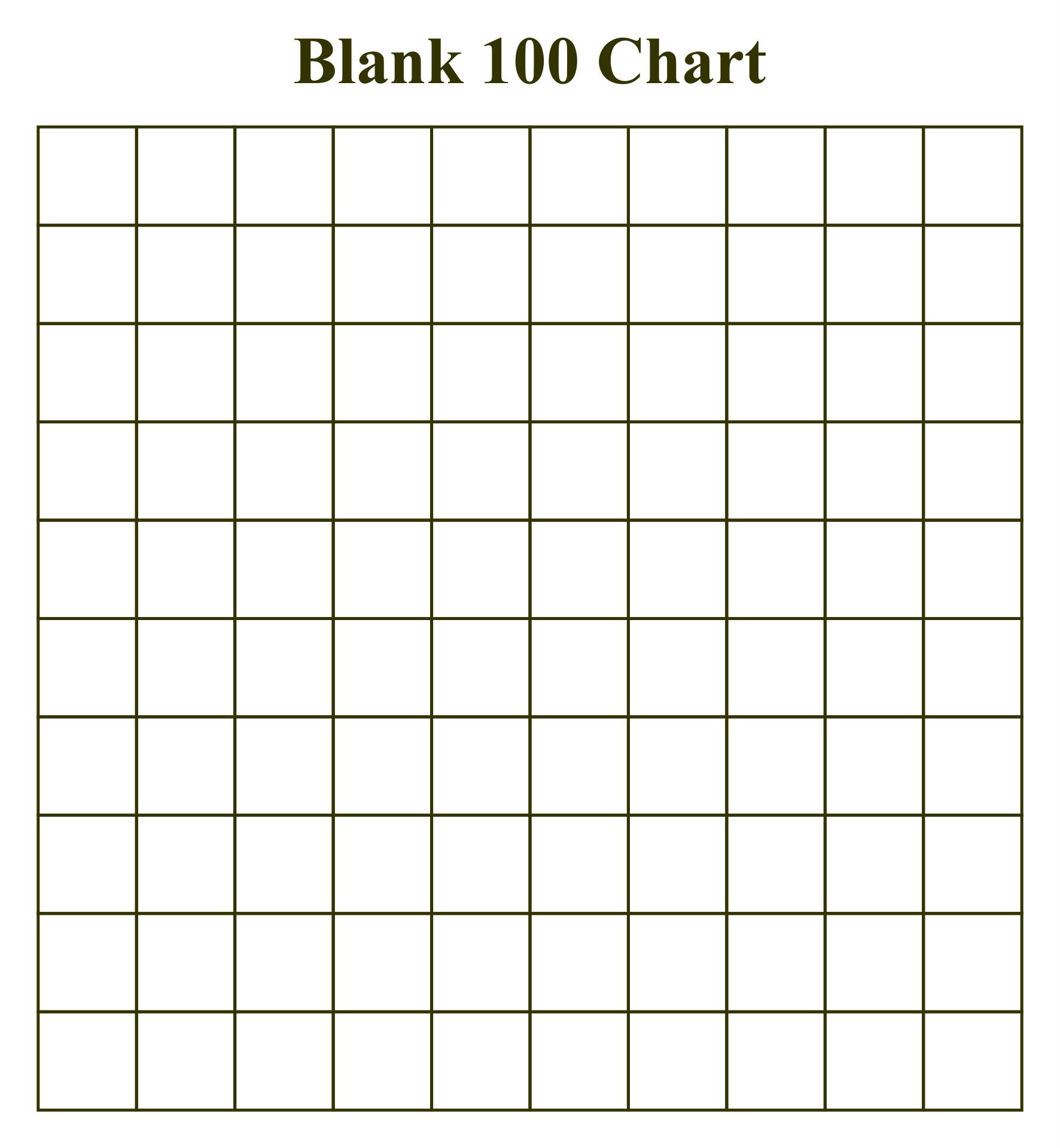As an American, I believe in the importance of education and learning. One tool that has been proven to be incredibly helpful in teaching math concepts to young children is the 100 chart. This handy chart helps kids visualize numbers and learn important mathematical concepts like counting, skip counting, and place value.
100 Chart Printable
 One of the best 100 chart printables I have found is this blank chart from printablee.com. This chart is perfect for teachers and parents alike, as it can be printed out and used at home or in the classroom. I particularly appreciate the clear and easy-to-read numbering on the chart, which makes it easy for kids to follow along and understand.
One of the best 100 chart printables I have found is this blank chart from printablee.com. This chart is perfect for teachers and parents alike, as it can be printed out and used at home or in the classroom. I particularly appreciate the clear and easy-to-read numbering on the chart, which makes it easy for kids to follow along and understand.
Why Use a 100 Chart?
There are many reasons why teachers and parents alike choose to use a 100 chart when teaching math concepts to young children. One of the main reasons is that the chart allows kids to visualize mathematical concepts in a tangible and concrete way, which can be especially helpful for children who learn best through visual aids.
Using a 100 chart also helps kids develop important mathematical skills like counting, skip counting, and place value. By working with the chart, kids can better understand the relationship between numbers and develop a stronger sense of numeracy overall.
How to Use a 100 Chart
There are many ways to use a 100 chart when teaching math concepts to young children. Here are a few ideas:
Counting
One of the most basic ways to use a 100 chart is for counting. Young children can practice counting to 100 by pointing to each number on the chart in order. This can help them develop a better understanding of numerical order and basic counting skills.
Skip Counting
Another way to use the 100 chart is for skip counting. For example, you can ask your child to count by twos, starting at one and continuing until they reach 100. By skipping numbers in this way, kids can develop a stronger sense of number patterns and sequences.
Place Value
The 100 chart can also be used to teach children about place value. For example, you can ask your child to find specific numbers on the chart and then ask them to identify the place value of each digit in the number. This can help kids develop a better understanding of place value and how it relates to mathematical concepts like addition and subtraction.
Conclusion
The 100 chart is a simple yet powerful tool that can be used to teach a wide range of mathematical concepts to young children. Whether you are a teacher or a parent, using a 100 chart can help your child develop important mathematical skills like counting, skip counting, and place value. So why not give it a try today?